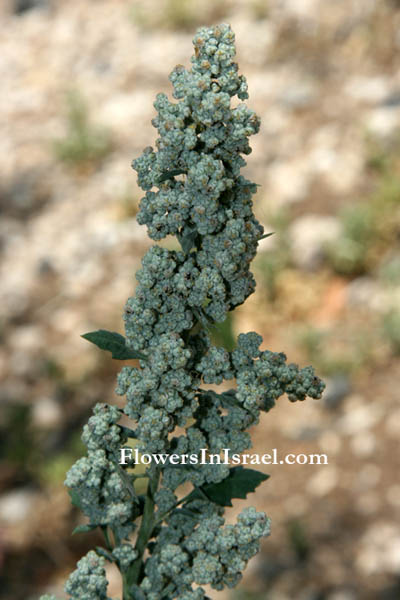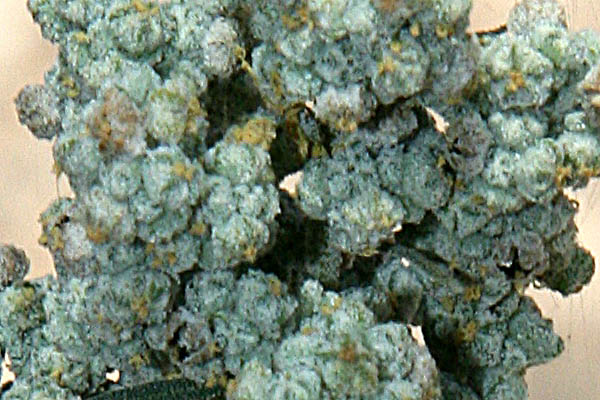Hebrew: כף-אווז האשפות, Arabic: سرمق جداري, Egypt: أبو عفين "Abu 'Efein"
| Scientific name: | Chenopodium murale L. | |
| Common name: | Neetle-leaved goosefoot | |
| Hebrew name: | כף-אווז האשפות | |
| Arabic name: | سرمق جداري | |
| Egypt: | أبو عفين "Abu 'Efein" | |
| Plant Family: | Chenopodiaceae, סלקיים |

|
| Life form: | Annual | |
| Stems: | Up to 90 cm tall, with branches arising mostly from the base of the main stem | |
| Leaves: | Alternate, entire, dentate or serrate | |
| Flowers: | Green | |
| Fruits / pods: | Tiny, up to 1.5 mm in diameter; seed disk shaped, black to dark brown, with a minutely pitted surface | |
| Flowering Period: | February, March, April, May, June, July, August, September, October, November, December | |
| Habitat: | Nutrient-rich soils, ruderal | |
| Distribution: | Mediterranean Woodlands and Shrublands, Semi-steppe shrublands, Shrub-steppes, Deserts and extreme deserts, Montane vegetation of Mt. Hermon | |
| Chorotype: | Plurireginal, boreal-trop | |
| Summer shedding: | Ephemeral |

Derivation of the botanical name: Chenopodium, from Greek chen, "goose," and pous, "foot," or podion, "a little foot," referring to the shape of the leaves in some species. murale, of walls
|